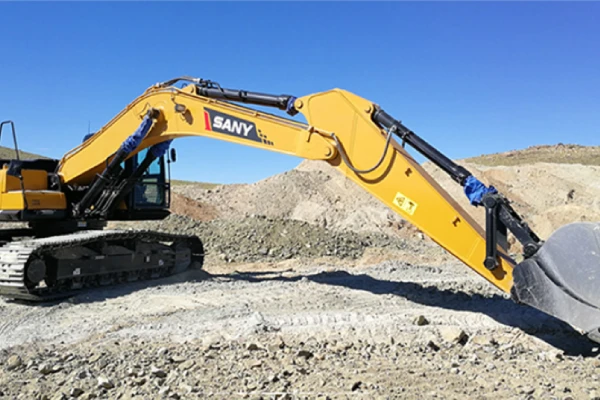When it comes to maintaining a lush and vibrant garden, proper watering is essential. A key factor in achieving effective watering is understanding the concept of “gallon per minute” (GPM) in relation to garden hoses. In this article, we’ll delve into the significance of GPM, how it affects your watering routine, and ways to optimize your watering process for maximum efficiency.
What Is Garden Hose Gallon Per Minute (GPM)?
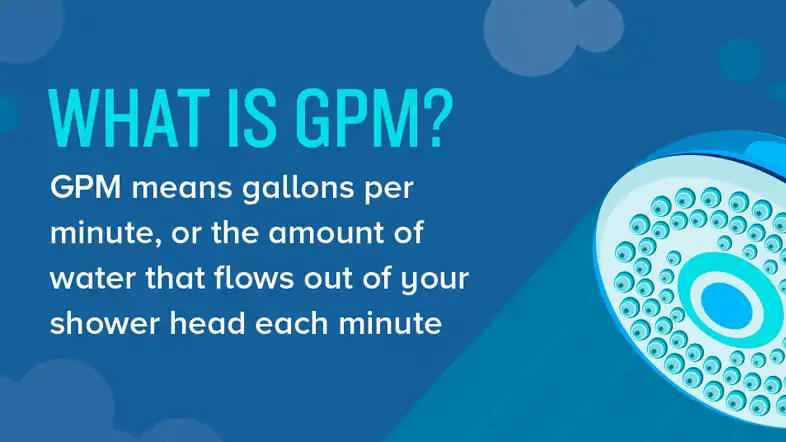
Garden Hose Gallon Per Minute refers to the amount of water a garden hose can deliver in one minute. It’s a crucial metric as it determines the speed and efficiency at which your plants receive water. A higher GPM ensures quicker and more effective watering, while a lower GPM might lead to inadequate hydration for your plants.
Why Does GPM Matter for Your Garden?
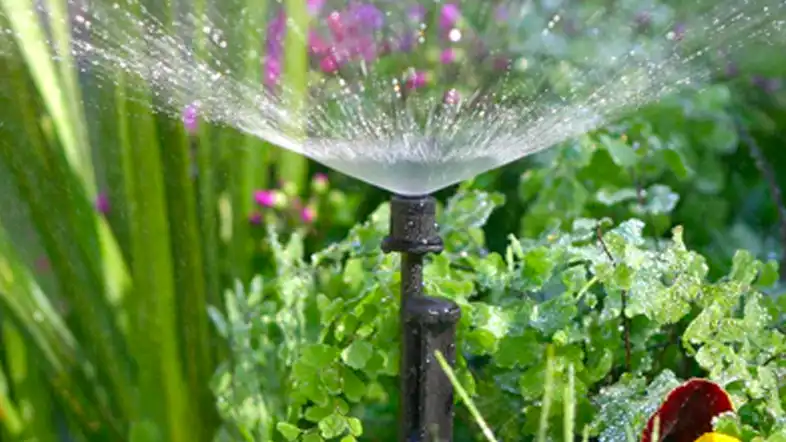
The concept of GPM, or gallon per minute, plays a pivotal role in the well-being of your garden. Think of GPM as the speed at which your garden hose delivers water to your plants. This seemingly simple factor holds immense significance because it directly influences the quality of hydration your plants receive.
Imagine you’re trying to quench your thirst on a hot day. You wouldn’t want a trickle of water; you’d want a steady stream to satisfy your thirst quickly and effectively. Similarly, your plants also have their “thirst,” and GPM ensures they receive water at a pace that keeps them healthy and vibrant.
When you water your garden, the goal is to provide sufficient moisture to the soil and roots. If your hose has a low GPM, it means water is flowing out slowly. This could result in insufficient watering, leaving your plants thirsty and stressed. On the other hand, a high GPM hose delivers water more swiftly, ensuring that the soil gets the moisture it needs without delay.
Moreover, GPM influences the coverage area of your watering. If your hose has a low GPM, you might find yourself spending more time watering the same area, or worse, leaving some spots inadequately hydrated. A higher GPM, however, covers a larger area efficiently, saving you time and effort.
Consider the diverse plant types in your garden, each with its own water requirements. Some plants might need a gentle, steady stream, while others might benefit from a more substantial flow. Understanding the GPM of your hose allows you to tailor your watering to meet these specific needs, fostering healthy growth across all your plants.
In essence, GPM matters because it ensures that your garden receives the hydration it needs in a timely and efficient manner. It prevents under-watering, over-watering, and uneven watering, all of which can negatively impact the health of your plants. So, the next time you water your garden, remember that the rate of water flow, measured in GPM, is a crucial factor in nurturing your garden’s beauty and vitality.
Calculating Your Garden’s Watering Needs
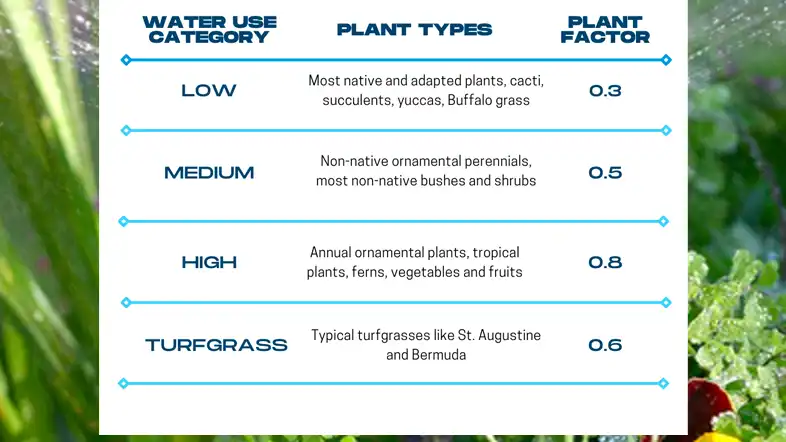
Calculating your garden’s watering needs is a crucial step in maintaining a thriving and vibrant outdoor space. It involves determining the precise amount of water required to adequately hydrate your plants while minimizing wastage. This process ensures that your garden receives the necessary moisture to support healthy growth without overburdening it with excessive water.
To calculate your garden’s watering needs, consider several factors:
- Garden Hose Size: Measure the dimensions of your garden to estimate its surface area. A larger garden will require more water to cover the entire space effectively.
- Plant Types: Different plants have varying water requirements. Research the water needs of each plant species in your garden to tailor your watering strategy accordingly.
- Climate: Take your local climate into account. Hotter and drier climates will demand more frequent and generous watering, while cooler climates may require less water.
- Soil Type: The type of soil in your garden affects water retention. Sandy soils drain faster, necessitating more frequent watering, whereas clay soils retain water better and might need less frequent irrigation.
- Plant Growth Stage: Consider the growth stage of your plants. Young plants generally require more water as they establish their root systems, while mature plants may need less frequent watering.
- Time of Year: Seasonal changes impact water requirements. During warmer months, plants generally need more water to combat higher temperatures and increased evaporation.
Once you have gathered this information, you can use it to calculate the optimal watering volume for your garden. It’s crucial to strike a balance between providing enough water to meet your plants’ needs without causing waterlogging or wastage.
One approach is to use a simple equation:
Watering Volume = Garden Size (sq. ft.) x Water Requirement (inches per week)
The water requirement is typically given in inches per week, and you can find this information from gardening resources or plant care guidelines.
Additionally, consider employing tools like moisture meters to monitor soil moisture levels. These devices help you assess whether your plants need water or if the soil retains enough moisture from previous watering.
By accurately calculating your garden’s watering needs, you not only promote healthy plant growth but also conserve water resources by avoiding unnecessary overwatering.
How Many Gallons per Minute is a Garden Hose
The gallons per minute (GPM) of a garden hose can vary based on factors such as hose diameter, water pressure, and the specific hose model.
On average, a standard garden hose typically has a GPM ranging from 5 to 10. However, hoses with larger diameters and higher water pressure can yield higher GPM values, possibly reaching up to 20 GPM or more. It’s important to note that GPM can be influenced by the connection to your water source, any attachments or nozzles used, and the overall condition of the hose.
To determine the exact GPM of your garden hose, you can use a simple measurement method by timing how long it takes to fill a container of known volume, such as a bucket, and then calculating the GPM based on that measurement.
Average Garden Hose Gallons per Minute
The average gallons per minute (GPM) for a garden hose typically falls within the range of 5 to 10 GPM. However, this can vary based on factors such as the diameter of the hose, water pressure from the source, and any attachments or nozzles used.
Garden hoses with larger diameters and higher water pressure tend to have higher GPM values, potentially reaching up to 20 GPM or more in some cases. It’s important to note that the GPM of a garden hose can impact the efficiency and effectiveness of your watering tasks, so choosing the right hose for your specific needs is essential.
How Many Gallons per Hour Garden Hose
The gallons per hour (GPH) output of a garden hose depends on its gallons per minute (GPM) flow rate and the duration for which it operates. To calculate the GPH, you can multiply the GPM by 60 (minutes in an hour).
For example, if your garden hose has a flow rate of 5 gallons per minute:
GPH = GPM × 60 GPH = 5 GPM × 60 = 300 GPH
So, a garden hose with a flow rate of 5 gallons per minute would have an output of 300 gallons per hour. Keep in mind that this calculation assumes a consistent flow rate throughout the hour and doesn’t account for factors like water pressure variations or hose restrictions.
Gallon Meter for Garden Hose
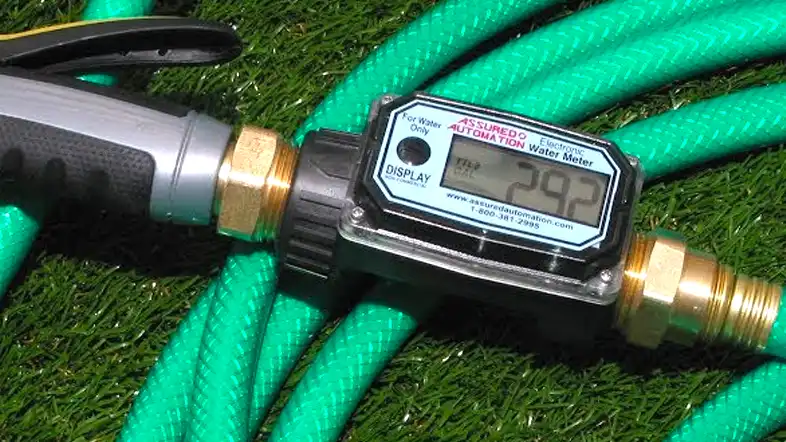
A gallon meter for a garden hose, also known as a flow meter or water usage meter, is a device that measures the amount of water passing through the hose in gallons. This handy tool provides you with accurate information about your water consumption, helping you keep track of how much water you’re using for various gardening or outdoor tasks.
A gallon meter typically attaches to the garden hose, either at the faucet end or at the nozzle end. As water flows through the hose, the meter records the volume in gallons. This information can be valuable for water conservation efforts, managing your garden’s hydration needs, and even assessing the efficiency of your watering routines.
Using a gallon meter can assist you in avoiding water wastage, ensuring you provide your plants with the right amount of water without overdoing it. Additionally, it can be a useful tool for budgeting and monitoring your water usage, especially if you’re on a water metering system or aiming to reduce your environmental footprint.
Keep in mind that gallon meters come in various designs and styles, so you can choose one that best suits your needs. Whether you’re an avid gardener or simply want to be more mindful of your water usage, a gallon meter for your garden hose can be a beneficial addition to your gardening toolkit.
Choosing the Right Garden Hose for Your Needs
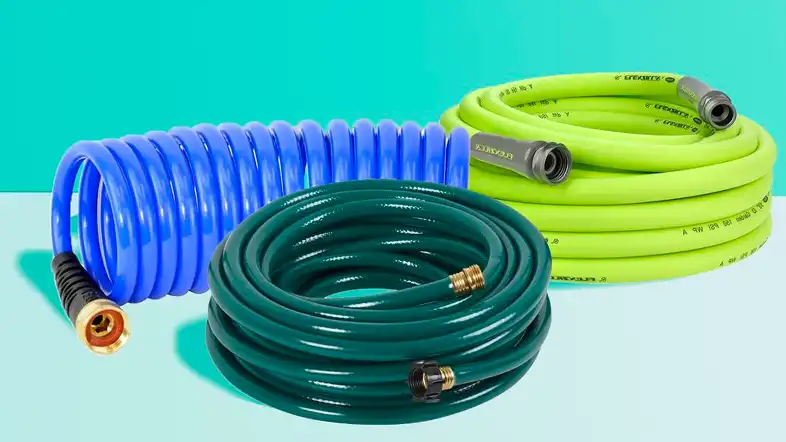
Selecting the appropriate hose involves assessing both GPM and hose material. A hose with a higher GPM is beneficial for larger gardens, while a lower GPM may suffice for smaller spaces. Opt for durable, kink-resistant hoses to ensure longevity and consistent water flow.
Factors Affecting Water Flow Rate
Several factors influence the GPM of your garden hose:
Garden Hose Diameter
The diameter of the hose directly affects water flow. Wider hoses tend to have higher GPM, allowing more water to pass through.
Water Pressure
Water pressure from your source significantly impacts GPM. Higher pressure results in greater flow rate, while low pressure reduces it.
Garden Hose Length
Longer hoses may experience pressure drop due to friction against the walls, affecting GPM. Balance hose length with adequate water pressure for optimal results.
Measuring Your Garden Hose’s GPM
To measure your garden hose’s GPM, you can use a simple bucket and a timer. Fill the bucket for a minute, then calculate the GPM based on the bucket’s volume. This helps you understand your hose’s efficiency and adjust your watering practices accordingly.
Efficient Watering Techniques for Different Plants
Different plants have varying water requirements. Tailor your watering techniques to specific plant types:
Lawns and Ground Cover
For lawns, opt for oscillating sprinklers that provide even coverage. Adjust GPM based on the grass type and climate conditions.
Flower Beds and Shrubs
Use soaker hoses or drip irrigation for flower beds and shrubs. These methods deliver water directly to the soil, minimizing evaporation and maximizing absorption.
Vegetable Gardens
Drip irrigation systems with adjustable GPM are ideal for vegetable gardens. They ensure consistent moisture, preventing waterlogging and promoting healthy yields.
Importance of Consistent Watering
Consistency in watering is crucial for plant health. Fluctuations in GPM or irregular watering schedules can stress plants, making them more susceptible to diseases and pests.
Maximizing Watering Efficiency
Achieve optimal watering efficiency with these strategies:
Using Nozzles and Attachments
Attach high-quality nozzles or spray patterns to control water distribution. Some attachments even allow you to adjust GPM according to the area’s needs.
Proper Hose Maintenance
Regularly check and clean your hose to prevent clogs and blockages that can hinder GPM. Store hoses properly to avoid kinks.
Drip Irrigation Systems: A GPM Perspective
Drip irrigation systems provide precise GPM control. They reduce water wastage by delivering water directly to the root zone, promoting water conservation.
Environmental Benefits of Optimized Watering
Efficient watering practices not only conserve water but also reduce your ecological footprint. By using the right GPM and techniques, you contribute to a healthier environment.
Common Mistakes to Avoid
Avoid these common GPM-related mistakes:
- Overlooking water pressure issues
- Using the wrong hose diameter
- Neglecting to measure actual GPM
- Ignoring plant-specific needs
Signs of Overwatering and Underwatering
Understanding GPM helps you recognize signs of overwatering (wilting, mold) and underwatering (dry soil, stunted growth), enabling prompt corrective action.
Adapting to Seasonal Watering Needs
Adjust GPM based on seasonal variations. Plants have different water requirements during different times of the year.
Conclusion
Optimizing your garden hose’s GPM is a key factor in maintaining a healthy and thriving garden. By understanding its significance, choosing the right hose, and implementing efficient watering techniques, you ensure your plants receive the care they deserve while conserving water and contributing to a greener environment.
FAQs
How do I measure my garden hose’s GPM accurately?
To measure GPM, fill a bucket using your hose for exactly one minute. Then, measure the volume of water in the bucket. Divide the volume by one minute to get your GPM.
Can I use a high-GPM hose for all my plants?
While a high-GPM hose is versatile, it might lead to overwatering certain plants. Consider the specific water needs of your garden’s different plant types before deciding.
Is drip irrigation more efficient than traditional watering?
Yes, drip irrigation is more efficient. It delivers water directly to the roots, minimizing wastage and evaporation.
How often should I water during hot summer months?
In hot weather, it’s generally recommended to water every 2-3 days. However, factors like soil type and plant species can influence the frequency.
What’s the best way to prevent garden hose kinks?
To prevent kinks, invest in a kink-resistant hose and store it properly on a hose reel when not in use.




